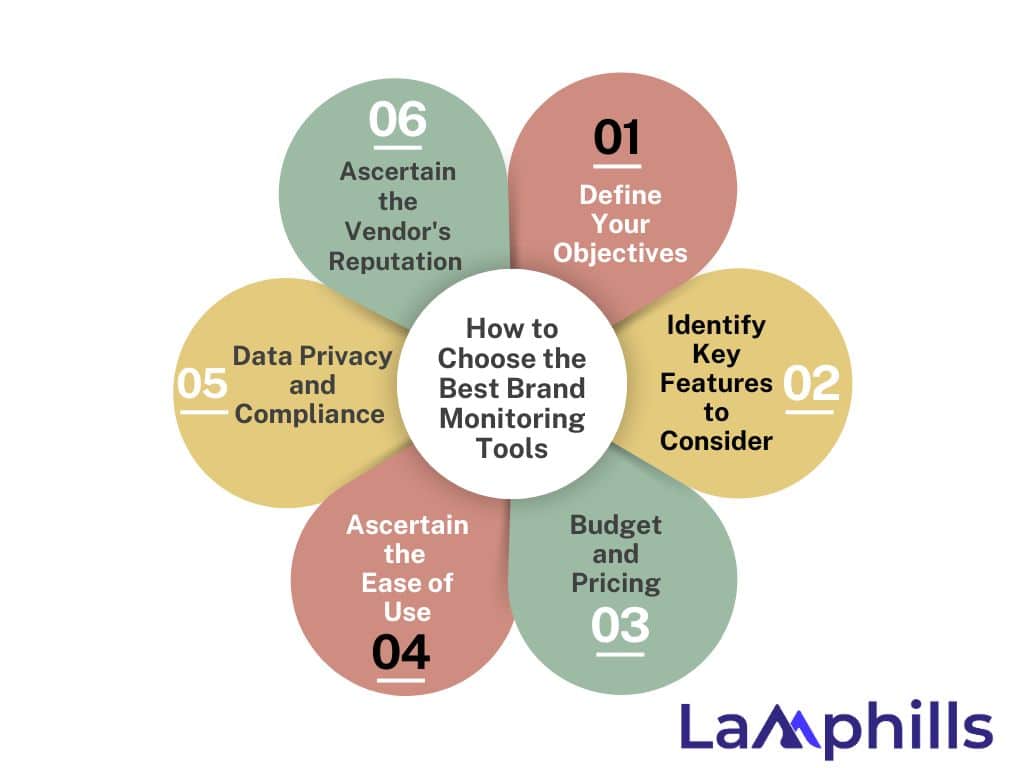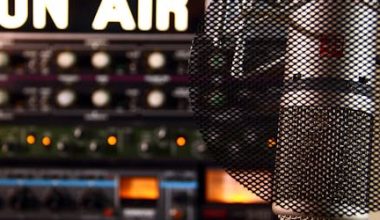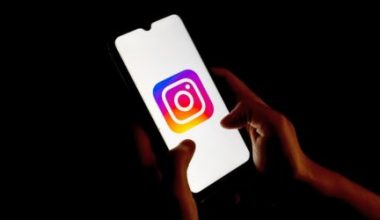Brand monitoring tools are indispensable assets to brands that intend to build, protect, and grow their business in a competitive landscape. It can help with reputation management, competitive analysis, audience insights, crisis management, and so on. These tools offer many benefits that businesses can maximize to stay agile, informed, and competitive in today’s dynamic marketplace. It simply lets you know what people say about your business, product, or services on the Internet.
My focus today is to help you understand its importance, why you need it, how to choose from the tons of tools available, and how to use the result (whether positive or negative) to your advantage.
Key Points
- Brand monitoring involves systematically tracking and analyzing mentions, conversations, and sentiments surrounding your brand across various online channels
- These tools aren’t just fancy gadgets; they are much more than that. See them as your online detective, sniffing out mentions of your brand across the digital universe.
- Brand monitoring tools can be free or paid, however, paid tools offer more advanced features compared to free ones.
- Brand monitoring tools are indispensable assets to brands that intend to build, protect, and grow their business in a competitive landscape.
- To track your brand online, first, define your objectives and KPIs, and use these to set clear goals based on what you want to achieve.
Understanding Brand Monitoring
Brand monitoring involves systematically tracking and analyzing mentions, conversations, and sentiments surrounding your brand across various online channels. It’s like having a pair of ears tuned to the digital world, allowing you to listen in on what people say about your brand and how they perceive it. To be sure you better understand this, let me illustrate with this picture:
Imagine you’re the owner of a small coffee shop nestled in a bustling neighborhood. Your coffee is renowned for its rich flavor and inviting aroma, drawing in customers from far and wide. Sounds great, right? Well, one day, you overhear a conversation between two passersby discussing a new café that opened down the street. They mention how they’re intrigued by its modern ambiance and trendy menu offerings. Your heart sinks as you realize that this new café could pose a threat to your business.
When reflecting on the impact of the new coffee sbusinesses how to better position your brand, you suddenly felt the need to know what clients are saying about your business and how to keep an eye on your competitors. It’s like having a loyal assistant with eagle-eyed vision, constantly scanning the internet to keep tabs on your brand’s reputation.
What is a Brand Tracking Tool?
If brand monitoring is like keeping your finger on the pulse of your brand’s online presence, then brand tracking is the art of reading the EKG. It’s about zooming out to see the bigger picture and understanding the long-term trends and patterns that shape your brand’s trajectory. Brand tracking tools help you measure key metrics like brand awareness, sentiment analysis, and market share over time, giving you invaluable insights into how your brand is perceived and where it stands in the competitive landscape.
What is a Brand Monitoring Tool Used For?
Brand monitoring tools aren’t just fancy gadgets; they are much more than that. See them as your online detective, sniffing out mentions of your brand across the digital universe. Why? It’s because they’re your secret weapon for uncovering hidden gems of insight buried within the vast sea of data available online. From spotting trends and identifying influencers to keeping an eye on your competition, these tools do it all, helping you fine-tune your brand strategy and stay one step ahead.
How Do You Monitor a Brand?
Back to the story of the coffee shop owner, does spending time on diverse social media platforms help with monitoring the business? Trust me, it’ll be a total waste of time and energy, so how do you monitor a brand? Monitoring a brand isn’t just about setting up a few alerts and calling them a day; it’s a strategic dance that requires finesse and agility.
First, you need to define your objectives and KPIs, setting clear goals for what you want to achieve. Then, armed with the right tools and a keen eye for detail, you dive headfirst into the digital fray, tracking mentions, analyzing sentiment, and engaging with your audience in real-time. It’s a balancing act of proactive listening and thoughtful response, ensuring your brand stays top-of-mind and ahead of the curve.
Brand Monitoring Tools
Brand monitoring tools can be free or paid. Most startups are quick to go for free tools, but is this the best? Take this as free PR information, Lamphills has helped several brands keep a tab on their online presence, and we’ve observed that free tools are limited. However, this depends on your business goals and the level of competition in your niche.
What this means is, that to effectively monitor your brand’s online presence, you may have to subscribe to the premium versions of those tools. Why? Most free tools have premium plans with amazing offers. We’ll look at both free and paid brand monitoring tools, their features, and their uniqueness.
Brand Monitoring Tools (Free)
These tools offer a range of features and capabilities to suit various brand monitoring needs, from basic alerts to real-time social media analysis. By leveraging their unique strengths, businesses can gain valuable insights into their brand’s online reputation and engage with their audience effectively.
#1. Google Alerts
One of the things I love about Google Alerts is the fact that its service is completely free. I think it’s a great choice for startup brands that want to monitor their online mentions without spending much. It’s first on this list because it’s possibly the only free tool that guarantees results.
Google Alerts is a versatile tool that allows users to monitor mentions of specific keywords across the web. With this tool, brands can customize alerts based on their preferences, including frequency, sources, and language. It keeps you up-to-date at all times, and if you’re wondering how this works, I’ll explain. Google Alerts sends email notifications whenever new mentions are detected. This makes it easy for brands to stay informed in real-time.
What Makes Google Alerts Unique?
The first thing that attracts me to Google Alert is its simplicity and accessibility. I also love its user-friendly interface and the wide coverage of online sources it provides for free. These and other incredible features make it an ideal choice for individuals and small businesses looking to dip their toes into brand monitoring without investing in paid tools.
#2. Talkwalker Alerts
If you don’t want to use Google Alerts or feel you’re not getting much result, you may have to consider Talkwalker Alerts. Why? Because it’s the perfect alternative to Google Alert. But, if you intend to use Talkwalker Alerts to monitor your brand, I suggest you go for the premium plans, because, they offer more features.
Talkwalker Alerts’ free version monitors online mentions of specified keywords across news articles, blogs, forums, and social media platforms. The tool delivers updates via email, allowing users to stay informed about relevant conversations in their industry.
What Makes Talkwalker Alerts Unique?
Talkwalker Alerts distinguishes itself with its wide coverage of online sources beyond social media. It provides insights into brand mentions across various channels, enabling users to track their online presence comprehensively and identify opportunities for engagement.
#3. Hootsuite
Why is the renowned multi-purpose brand monitoring tool, Hootsuite, part of this list? Hootsuite ought to be part of the paid tools, but it offers free monitoring features, which is why it’s on this list. Hootsuite is a social media management platform that offers basic monitoring features alongside scheduling, analytics, and engagement tools. With the free plan, users can create streams, and also monitor brand mentions, hashtags, and keywords across multiple social networks, including Facebook, Instagram, and LinkedIn.
What Makes Hootsuite Unique?
Hootsuite’s integration with various social media platforms and its all-in-one approach to social media management set it apart. It offers a comprehensive solution for managing and monitoring social media presence effectively.
#4. Social Mention
Before discussing this free tool, I’d like you to know it’s different from Mention. Mention is a paid tool that only offers a free 14-day trial for all its plans. On the other hand, Social Mention is a real-time social media search engine that aggregates user-generated content from various platforms, including Twitter, Facebook, and YouTube. It provides insights into sentiment, reach, and engagement metrics for brand mentions, hashtags, and keywords.
According to Cathy Reyes, a digital marketing manager at Agile Social Media, this monitoring tool is useful in many ways, and she describes it as a “digital marketer must-have tool.”
What Makes Social Mention Unique?
Its focus on social media content and its real-time capabilities set it apart from others. It offers a comprehensive overview of social media conversations surrounding a brand, making it a valuable tool for monitoring brand sentiment and staying on top of emerging trends.
#5. TweetDeck
TweetDeck is a social media dashboard for Twitter that allows users to manage multiple accounts, schedule tweets, and monitor conversations in real time. It allows users to create customizable columns that’ll enable them to track specific keywords, hashtags, and mentions related to their brand.
What Makes TweetDeck Unique?
TweetDeck’s strength lies in its focus on Twitter and its robust real-time monitoring capabilities. It’s an essential tool for businesses and individuals looking to stay on top of Twitter conversations, engage with their audience, and monitor brand mentions as they happen.
Read Also: 11 Google Alerts Alternatives You Should Try Now (Free & Paid)
Best Brand Monitoring Tools (Paid)
When it comes to paid brand monitoring tools, expect the best amidst strict competition. What do I mean? These tools have astounding features, and each of them has something that differentiates them from the others. Additionally, PR companies like Lamphills and several others use their analytics to make strategic decisions on how to move businesses forward. The following are some of the best-paid brand monitoring tools:
#1. SEMrush
SEMrush Brand Monitoring is a feature within the SEMrush platform designed to help businesses monitor their brand mentions across the web. It offers a set of features and tools to help businesses monitor and manage their brand reputation effectively across the web. With its real-time monitoring, sentiment analysis, competitor tracking, customizable alerts, and integration with the SEMrush platform, SEMrush Brand Monitoring empowers users to stay ahead of the curve and make informed decisions to drive brand success.
What Makes SEMrush Unique?
SEMrush’s brand monitoring tool stands out for its integrated platform, accurate data, comprehensive coverage, advanced analytics, AI-powered insights, and global reach. All these make it a valuable asset for businesses looking to monitor and manage their online reputation effectively in today’s digital landscape.
#2. Brandwatch
Brandwatch offers advanced social listening capabilities, allowing users to track brand mentions, sentiment analysis, and competitor activity across multiple online channels. The platform provides customizable dashboards, real-time alerts, and in-depth analytics to uncover actionable insights.
One of the things that draws me to Brandwatch isn’t just the name but its pricing plan. I love how the plans are structured to ensure that you get results regardless of the plan you subscribe to. Brandwatch has three plans.
The Consumer intelligence plan is for researchers and analysts; the Social media management plan is for social media managers; and the Influencer marketing plan is meant for influencer marketers. Each of these has unique propositions and relevance to brands.
What Makes Brandwatch Unique?
Brandwatch stands out for its robust analytics and data visualization features. It offers sophisticated sentiment analysis and trend detection algorithms, enabling users to identify emerging topics and sentiments relevant to their brand. Additionally, Brandwatch’s AI-powered capabilities enhance data accuracy and predictive analytics. This provides valuable insights for informed decision-making.
#3. Mention
Mention is one of the best brand monitoring tools available. This brand monitoring platform tracks brand mentions, sentiment, and engagement across social media, news websites, blogs, and forums. It offers real-time alerts, customizable reports, and sentiment analysis to help users understand their brand’s online reputation and competitive landscape. It has four pricing plans and, unfortunately, doesn’t have a free plan.
However, you’ll be given two free months, if you’re billed annually. The plans are as follows: The Solo plan goes for $49, the Pro plan for $83, the ProPlus plan for $149, and the Company Plan. For the company plan, you’ll have to chat with them because it varies. I mean, the price depends on your needs and expectations.
What Makes Mention Unique?
Mention excels in its real-time monitoring capabilities and user-friendly interface. Its intuitive dashboard provides a centralized hub for monitoring brand mentions and engaging with audiences across multiple channels. Additionally, Mention’s sentiment analysis and influencer identification features empower users to proactively manage their brand’s online presence and reputation effectively.
#4. Sprout Social
Sprout Social might not be ideal for startups because of the pricing, the standard plan costs $199. However, if you can afford it, give it a shot because it’s more than a monitoring tool. Sprout Social is a comprehensive social media management platform that includes brand monitoring features alongside scheduling, analytics, and engagement tools.
It offers customizable dashboards, keyword tracking, and sentiment analysis to help users monitor brand mentions and conversations across social networks. Like the Mention monitoring tool, Sprout Social has four pricing plans too.
What Makes Sprout Social Unique?
Sprout Social stands out for its seamless integration of brand monitoring with social media management capabilities. This unified platform allows users to streamline their social media workflows, from scheduling posts to monitoring brand mentions and responding to customer inquiries.
Additionally, Sprout Social’s robust reporting features provide valuable insights into social media performance and audience engagement, enabling users to optimize their brand strategy effectively.
#5. Awario
Awario is a powerful social media monitoring tool that tracks brand mentions, sentiment, and influencer activity across the web. It offers real-time alerts, sentiment analysis, and competitor benchmarking to help users understand their brand’s online reputation and identify opportunities for engagement. It has three pricing plans, which are quite affordable compared to Social Sprout.
What Makes Awario Unique?
Awario’s strength lies in its comprehensive coverage of online sources and advanced sentiment analysis capabilities. It monitors mentions across social media platforms, news websites, blogs, and forums, providing users with a holistic view of their brand’s online presence. Additionally, Awario’s influencer identification features help users identify key influencers in their industry and leverage their influence to amplify brand messaging and reach.
#6. Brand24
Brand24 is a comprehensive social media monitoring and analytics tool that provides valuable insights into brand reputation, sentiment, and competitive landscape. With its real-time monitoring capabilities, sentiment analysis, and customizable reporting features, Brand24 empowers users to make data-driven decisions, engage with their audience effectively, and protect and enhance their brand reputation online.
What Makes Brand24 Unique?
Brand24’s combination of real-time monitoring, accurate sentiment analysis, competitor benchmarking, influencer identification, and customizable reporting make it a standout choice for businesses and organizations looking to track.
Benefits of Brand Monitoring Tools
Brand monitoring tools offer many benefits that can significantly enhance a company’s online presence, reputation management, and overall marketing strategies. If you’re doubting the effectiveness of these tools, I can give you some of their benefits based on firsthand experience:
#1. Reputation Management
With brand monitoring tools, businesses can keep track of their online mentions, reviews, and sentiments in real-time. That way, you can easily address any negative feedback or misconceptions. This has enabled Lamphills to manage its clients’ image while enhancing its reputation as a PR company.
#2. Competitor Analysis
These tools provide insights into competitors’ activities, helping businesses understand market trends, identify strengths and weaknesses, and capitalize on opportunities. When you analyze your competitors’ strategies, you can refine your approach to stay ahead in the market.
#3. Crisis Management
In a crisis or negative publicity, brand monitoring tools enable companies to detect and address issues swiftly. Monitoring social media, news websites, and forums, will enable businesses to identify potential crises early and take proactive measures to mitigate damage.
#4. Customer Engagement
Brand monitoring tools facilitate meaningful interactions with customers by allowing businesses to respond promptly to inquiries, feedback, and mentions across various online platforms. By engaging with customers in real time, companies can build trust, loyalty, and positive brand sentiment.
Others Include:
- Identifying Influencers
- Content Marketing Insights
- Tracking Campaign Performance
- Brand Health Metrics
- Market Intelligence
- ROI Measurement
Are Brands Mentions Always Positive?
No, brand mentions can be positive or negative. This explains why you have to keep tabs on it. Every brand wants to promote a positive image of themselves. So it’s important to learn how to deal with negative mentions and how to appreciate positive ones.
How To Respond to Positive Brand Response
A positive mention could be a satisfied customer commending your brand for a job well done. In this case, all you have to do is appreciate their sincere feedback, and don’t forget to add that it’s a pleasure to serve, and you’re more than delighted to know they were satisfied. Whatever you do as a growing brand, do ensure to respond to your positive mentions.
How To Respond to Negative Brand Response
Negative mentions don’t mean your product or service stinks; they simply mean that the customer was dissatisfied with it. If the customer points out what the problem is, you can address it, or request they send you an email with what the problem is. That way, you’ll be able to address it accordingly. Some customers will just belittle the product without stating what the problem is. If that’s the case, kindly request they send an email explaining what the problem is, and you’ll be more than glad to address their concern.
The general rule for dealing with a negative mention is: “Never ignore or count negative mentions as insignificant.”
How to Choose the Best Brand Monitoring Tools

Choosing a brand monitoring tool involves considering several key factors to ensure the tool aligns with your specific needs and goals. It requires a balance between features, budget, and ease of use. The following are detailed step-by-step guide to help you make an informed decision:
#1. Define Your Objectives
First, determine what you want to achieve with brand monitoring (e.g., tracking brand mentions, managing reputation, understanding customer sentiment, monitoring competitors). Secondly, clarify your scope of monitoring, I mean, decide whether you need to monitor social media, news outlets, forums, blogs, or the entire web.
#2. Ascertain Key Features
After clarifying your goals, the next point is to look out for tools whose features align with your goals. The following are some of the features to watch out for:
- Comprehensive Coverage: Ensure the tool covers all relevant platforms and languages where your brand is mentioned.
- Real-Time Alerts: Look for tools that offer real-time notifications so you can respond promptly to mentions.
- Sentiment Analysis: This feature helps understand the tone (positive, negative, or neutral) of the mentions.
- Competitor Analysis: Some tools allow you to track competitors’ mentions and compare their performance with yours.
- Analytics and Reporting: Robust analytics and easy-to-understand reports are crucial for measuring the impact and making data-driven decisions.
- Customizable Dashboards: A user-friendly, customizable interface helps you focus on the metrics that matter most to you.
- Historical Data: Access to historical data can help in trend analysis over time.
- Integration Capabilities: Ensure the tool integrates well with other platforms and tools you use (e.g., CRM systems, and social media management tools).
#3. Budget and Pricing
Under budgeting and pricing, make sure to check out the pricing model (subscription-based, pay-per-mention, etc.) and ensure it fits within your budget. Tons of tools come with free trials/demos. You can also take advantage of this to test the tool’s functionality and usability before committing.
#4. Ease of Use
The tool should be intuitive and easy to navigate, and check if the vendor provides adequate customer support, tutorials, and training resources.
#5. Data Privacy and Compliance
Ensure the tool complies with data protection regulations (e.g., GDPR) and has robust security measures in place. Trust me, you don’t want your data to be in the hands of third parties.
#6. Vendor Reputation
Look for reviews, testimonials, and case studies from other users in your industry. You can also choose a reputable vendor known for reliability and the ability to scale with your business needs.
Lamphills Checklist To Choosing The Best Brand Monitoring Tool
Conclusion
Brand monitoring tools are indispensable assets for businesses seeking to build, protect, and grow their brand in the digital age. It can help with reputation management, competitive analysis, audience insights, crisis management, and so on.
These tools offer many benefits that empower businesses to stay agile, informed, and competitive in today’s dynamic marketplace. If you ever need a PR firm to help keep tabs on your brand mentions, you can contact Lamphills.
Related Articles
- HOW TO MEASURE BRAND REPUTATION IN 2024 (MY EXPERT TIPS)
- What is Share of Voice? A Comprehensive Guide to Measuring Your Brand’s Market Presence
- WHAT ARE THE DIFFERENCES BETWEEN SOCIAL LISTENING & MONITORING?






